As a frequent diner at my local Japanese restaurant, I thought I had a pretty good grasp of the country’s cuisine. But, when I had the chance to visit Japan’s southernmost prefecture, the stunning islands of Okinawa, I soon realised I’d barely scratched the surface.
A prefecture of Japan since the 19th century, Okinawa was historically part of the Ryukyu Kingdom, with its culture a mix of Japanese, Chinese, and Korean. As a result, its culinary scene has taken liberal inspiration from all of these to create something wholly unique.
If you’re looking for a destination with rich history, culture and delicious cuisine to boot, look no further than magical Okinawa.
Here are some of its must-try dishes.
Awamori
Before we can jump into the food, we need to first mention awamori – a distilled version of sake unique to Okinawa. Why? Because it’s so strongly linked to the local cuisine.
Made from long grain rice, awamori is similar in flavour to whisky and regularly enjoyed on the rocks or in cocktails. You’ll also spot it on the table at most restaurants in the form of a spicy condiment infused with chilli too.
Awamori is a great icebreaking tipple, one that opens doors and starts conversations with those around you.
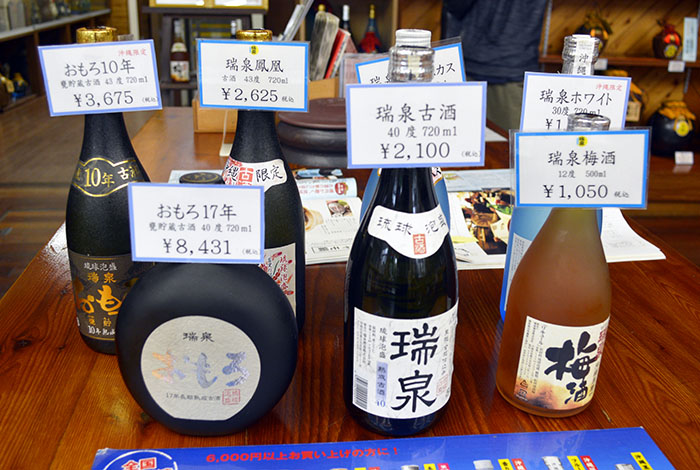
Soki Soba
Distinctly Okinawan, Soki Soba is a delicious noodle soup, which usually features thick wheat noodles, fish cake and a generous slice of pork belly or boneless pork ribs.
The meat is boiled to remove excess fat, then stewed in a mixture of awamori, soy sauce and sugar for several hours. It’s a hearty dish guaranteed to warm you up on a cold day.
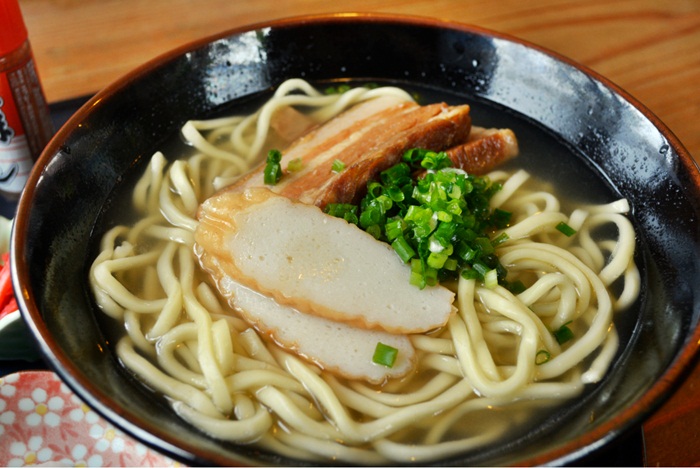
Goya Champuru
Goya is a hard thing to explain to the uninitiated. Often referred to as a bitter melon, it looks a bit like a shrivelled cucumber… yet its bitter flavour and texture are vastly different.
The most common way to eat goya is in a stir-fry or soup, although it’s also available as dried crisps and even as a soft drink. Goya champuru (which means ‘something mixed’ in Okinawa) is a stir-fried dish featuring thinly sliced goya, tofu, egg and pork.
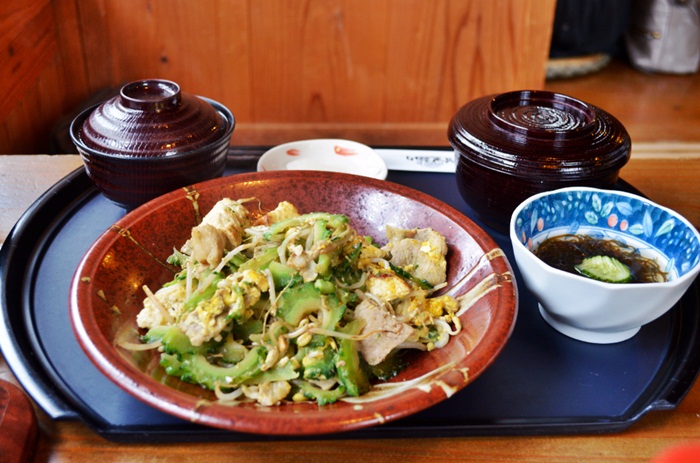
Mimiga
Commonly served as a side dish or snack, mimiga is thinly sliced cartilage from a pig’s ear, which has been boiled or steamed then mixed with various flavourings. It has a slightly crunchy texture. Although it may sound a bit scary, it’s surprisingly delicious – and is great served with beer!
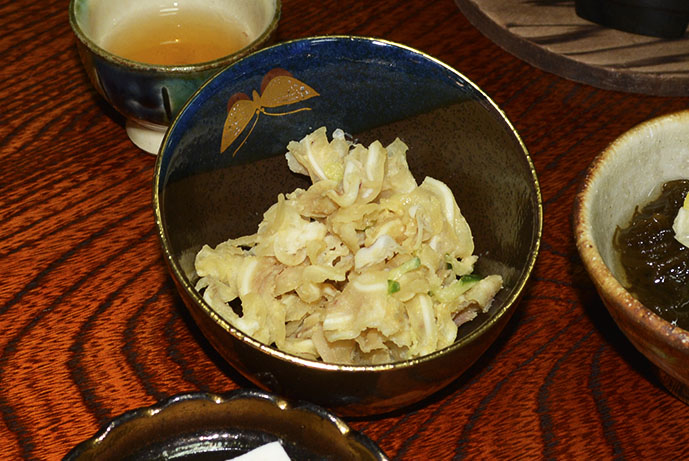
Sata Andagi
Sata andagi is a sweetc deep-friend bun made from flour, sugar and eggs. Golden brown on the outside, soft and fluffy on the inside, the texture is similar to that of a doughnut. Native to Okinawa, sata andagi is prepared using a mix of Japanese and Chinese techniques.
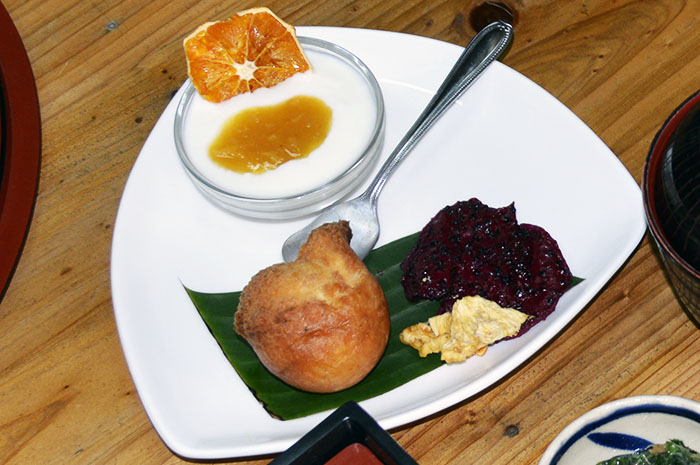
Mozuku Su
Mozuku Su doesn’t look pretty, but it tastes amazing… and judging by how often it was served to me during my week in Okinawa, chances are you’ll probably come across it too.
This soft and slimy seaweed is high in minerals and low in calories. It’s commonly cooked in a marinade of vinegar and pickle vinegar, and served with a garnish of ginger or cucumber.
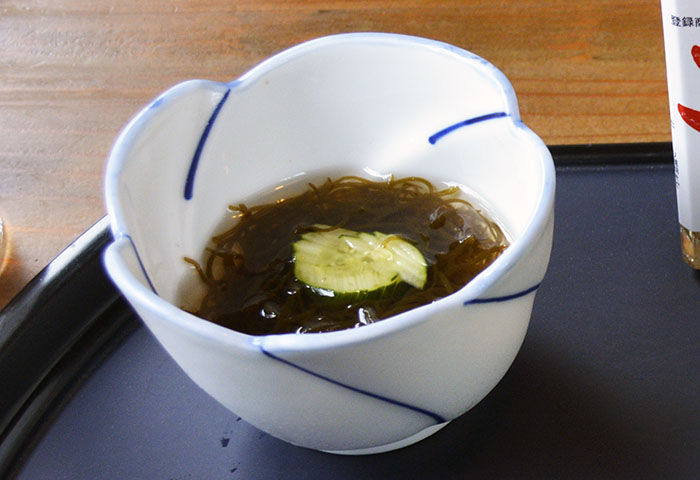
Longevity Meal at Emi no Mise
For the adventurous, a visit to ‘Emi no Mise’ in Ogimi Village is an absolute must. Like a crash course in Okinawan cuisine, their Longevity Meal features 14 mouth-watering dishes such as homemade golden noodles with skiikwasaa, purple sweet potato dumpling, bamboo shoots in soy broth, tempura with shrimp and fennel, and champuru (stir-fry) made with green papaya.
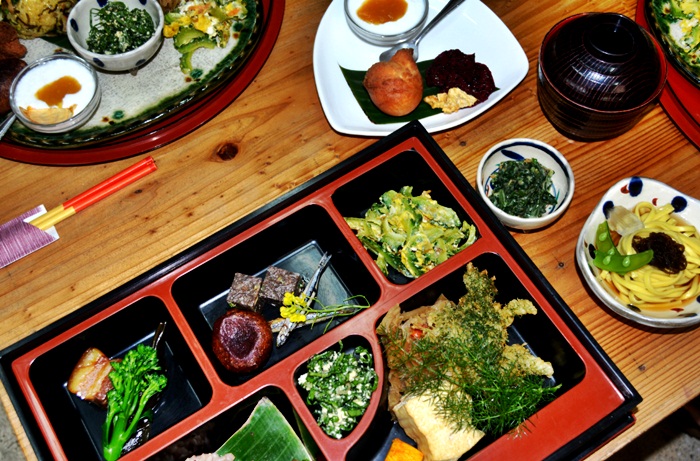
If there’s one bit of advice I can give anyone thinking of going to Okinawa, or the rest of Japan for that matter, it’s to be adventurous. There are so many wonderful dishes that are very, very different to what we have here in Australia, so the best thing you can do is go with an open mind and be willing to try whatever is served.


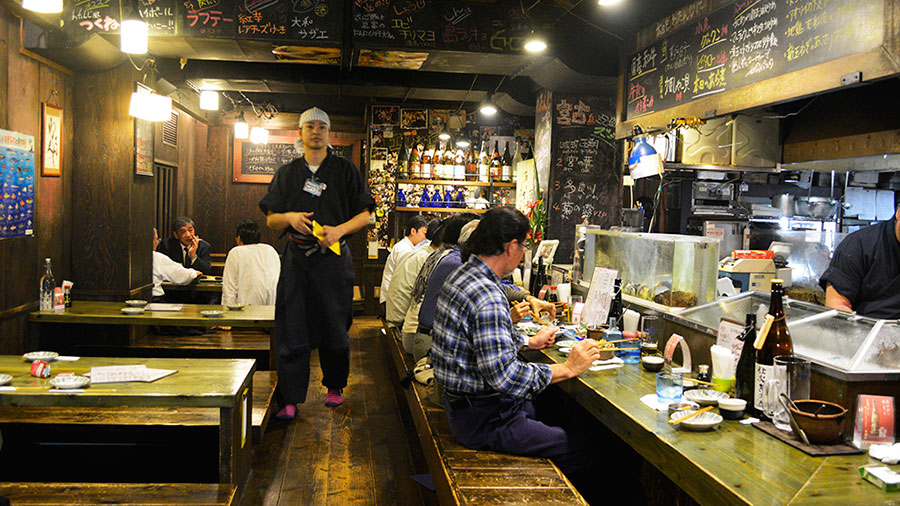
















Sata andagi is where it’s at. So wonderful, and there are a few places in our area (Seattle) that serve it or something similar.
I haven’t seen it for sale anywhere in Oz. Might need to look up the recipe if I’m going to get my next sata andagi fix.
Nice tour de force of Japanese cuising, loved the post 🙂
Thanks Voyager – I’m heading over to mainland Japan next month so there will no doubt be a follow up post to this one.
I LOVE Japanese food and I am surely I’d truly enjoy this! Unfortunately Okinawa wasn’t part of my itinerary, when there, but I am hoping to go back and there is no doubt that this time, I will inlcude it!
Interesting cuisine! That GOYA CHAMPURU ingredient seems to be ‘bitter gourd’ (in India also, we have it as dried crisps)!
Yeah, they had dried crisps in Okinawa too – I ate waaay too many.
While I do like me some bento boxes, this is one cuisine I feel quite sure I can skip in life. Loved your post and photos though.
Thanks very much 🙂
This looks like fun! I think I would like the Soki Soba the best. They all look pretty good though.
I’ll take the whiskey and the donut, please. 😉
Haven’t been and think I must, just to eat! How long did you visit?
I was there for around four or five days, it was a short trip but managed to pack quite a bit in to it. I’d suggest a week would be plenty.
Mmmm! I don’t have much experience with Japanese food outside of the basics, so I learned a lot from this list. Great, mouthwatering photos…That longevity meal is calling my name!
Thanks to this post, I now know a few names in Japanese Cuisine 🙂
Well, what can I say…this looks all so great!! Japanese food is so nice, and it’s difficult to find a great japanese restaurant, so going to Japan would be the best option, I guess 🙂
A food safari sounds like my kind of safari! I love sushi and most Japanese cuisine that I’ve tried so far, but the foods you shared in this post would have been new to me, as well. It all looks incredible though. Trying new and local foods is all part of the adventure, right?
I love Japanese cuisine. The Soki Soba looks great. We were surprised how much of their food is pickled or preserved (especially all the accompaniments.) Although when you think about it more, it is understandable.
Thanks for the fantastic food safari!Honestly,I wasn’t familiar with Japanese cuisine, apart from Sushi ofcourse.But, thanks to you, now I know more!